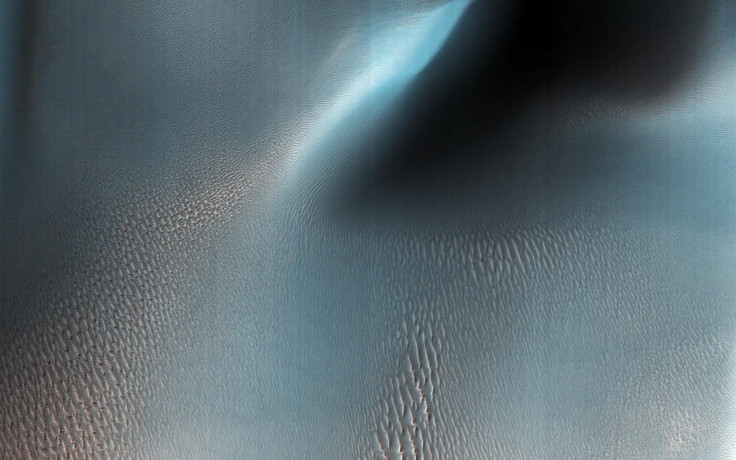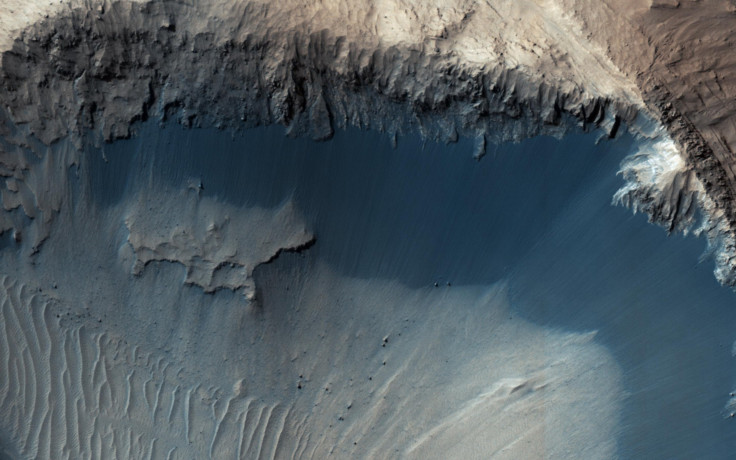Mars Has Dunes And Ripples, But Where Does The Sand Come From?

The red soil and dust on the surface of Mars that gives it the nickname of the red planet is caused by an excess of iron oxide, which we know as rust on Earth. However, sand on Mars comes in different hues, much like on Earth, and it also forms structures that cover large areas — either as dunes or ripples.
An image released by NASA on Tuesday shows the Proctor crater — a 105-mile wide crater in southwest Mars — and two different formations within it that are caused by the wind. The large, dark shape on the right is a sand dune which is made up of basaltic material, while the smaller, lighter lines are ripples whose technical name is transverse aeolian ridges, or TAR.
In a statement accompanying the image, NASA said the TARs are under 10 meters (33 feet) in height, which is in sharp contrast to the towering dunes which can be as tall as 130 meters. Using the High-Resolution Imaging Science Experiment instrument onboard the Mars Reconnaissance Orbiter (MRO) to image the surface from two different angles, scientists could determine the TARs lie under the dunes, establishing the fact that the TARs are older of the two.
But where these TARs are made of is not understood. According to the NASA statement, they could be deposits of dust or they could be made of sand grains that are covered in bright dust. The sand itself, though, is another source of mystery.
While known for its coarseness, sand is not exactly tough and gets worn down into dust over time. Given the effect of wind, sand grains travel “in a sequence of repeated hops” — a process called saltation — in which they rise above the surface, then crash down to the ground and bounce up again, NASA said in another statement. The process of rubbing against each other as they move also erodes sand grains, and the tiny bits that break off contribute to dust, in a process known as communition.
We know the processes here on Earth that keep the supply of sand replenished, so that beaches, for instance, keep looking like beaches, but we are not so sure about where the sand on Mars originates. Since saltation and communition severely limit the amount of time individual sand grains can exist for, new grains must be created on the Martian surface for its numerous dunes and ripples to exist.

Another MRO image, taken by the Context Camera, may have captured one of the places where this erosive activity may be taking place on Mars: a semicircular depression near the boundary of southern highlands and northern lowlands.
The bedrock in the region is dark and the image shows dark material being eroded from it. The downward-sloping lineations in the center and right bottom indicate the sand formations on the left bottom of the image formed due to the locally sourced material, and not from sand that the wind happened to blow into the region.
© Copyright IBTimes 2024. All rights reserved.





















